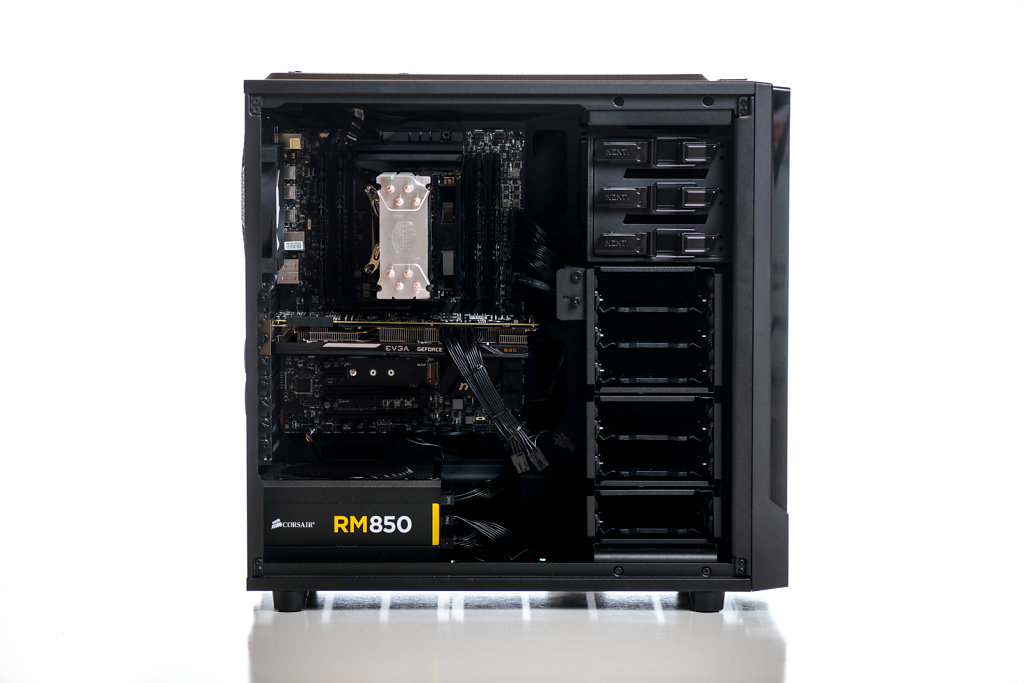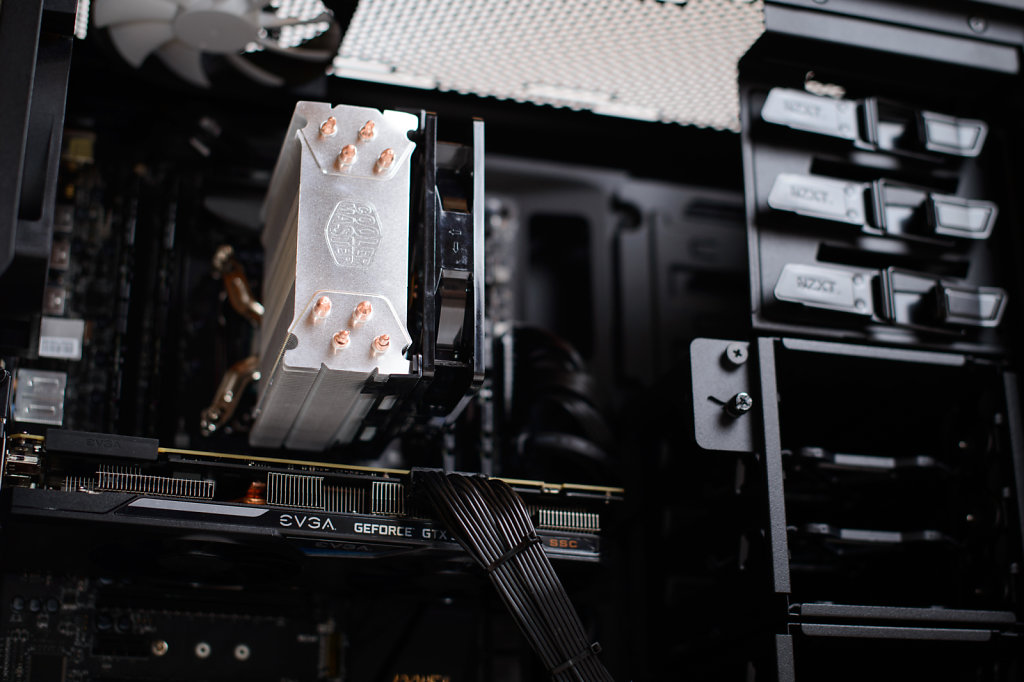Linux Photography I: The Great Experiment
Let me preface this by saying I've used Macs since the System 6/7 days when I was in middle school. I've also owned/built PCs during that time. I'm a general technology kind of person. I've used both platforms for almost every task imaginable. Even with that OS X has remained my platform of choice for important work over the last fifteen or so years. Both photographic and otherwise. So keep that in mind before you get your drawers in a bunch and fire off an angry email about me being a Mac hater or not hip enough to get it. I was writing code on a Mac back before the rest of the world figured out the Apple was cool and Steve Jobs knew what he was doing. I remember treating my Titanium PowerBook with the utmost care so I didn't ding the paint. I used Macs before the iPod was even a thing. I remember organizing and editing photos before Lightroom existed. So get off my lawn you darn kids!
OK, with that out of the way we can get to the meat of the post.
A few months ago I started looking at a replacing my aging Mac Pro. The final straw came when 20 of my 24GB of RAM failed and one of the RAID disk went out. Old, slow CPUs and a lack of memory really hampered my work. I RMA'ed the RAM but that would take a while to come back, FB-DIMMs were expensive when they were actually being mass produced and have only gone up in price in recent years. Ordering more RAM to hold me over seemed to be throwing good money after bad at this point.
I don't really care for the new iMacs. Part of the reason I've held on to this Mac Pro so long is because it uses easily replaceable and upgradeable parts which greatly extends it's service life. I've added a USB 3 card, upgraded the graphics to support three monitors, added more RAM, and more drives over the years. These days you can't even replace the hard drive on an iMac with off-the-shelf components due to the specialty firmware Apple uses. The new Mac Pro tube is firmly out of my budget (thanks, homeownership) and really isn't that great of a deal right now due to the hardware being aged. However, if I had an infinite budget I'd probably get 6-core model with 32-64GB of RAM, a few 1440p 27” anti-glare displays and a USB 3 or Thunderbolt disk array and call it a day. But that wasn't happening.
I looked at what kind of Mac I could get with my budget. It basically came down to a 21.5” iMac with an i5 or an i7 and 8-16GB of RAM. Not exactly appealing coming from the beast that is a Mac Pro. That felt like a real step down, even given the age of my machine.
The same amount of money would get me a killer DIY PC however.


Now, in defense of the Mac option if most of your work is Lightroom and basic photo editing even the cheapest Core i5 iMac with 8GB of RAM is enough. Heck, a basic Mac Mini would probably be enough. Especially if you have a smaller resolution sensor or older camera. I do more than basic photography with my machine. Stacking for astroimaging or panorama stitching with a high resolution camera eats up RAM and CPU time. I'd like to move into 4K video at some point in the near future too, as well as some rendering, and yes, even some gaming.
That doesn't explain the choice of Linux as the OS. That's simply a matter of personal preference. The philosophies of using open source aside I have a few other projects that are simply easier to work with on a *nix based OS. I'm also not a fan of Windows 8.1's interface or of the software as a service path Adobe is taking as I was an every-other-version-at-most upgrader of CS. I don't use Photoshop enough to justify the monthly price tag and didn't want to wait around for Lightroom to head that direction. I mostly used Photoshop for panorama stitching, HDR merging, some stacking and the occasional cloning/content-aware fill. All of these can be, with varying degrees of difficulty, accomplished with other software and have been around since CS3 or so. No real need for me to be forking over $10 a month for 5-7 year old features.
There's also the whole “if you do everything the same way the rest of the wold does you'll never learn anything” idea. Practically every serious photographer on the planet uses Lightroom. It's fine software and does a lot of things very well. If it ran on Linux I would have it installed (hint hint Adobe). But to me that means your photos are just going to end up with that “Lightroom look” to them. If you shoot RAW your choice of RAW processor matters a lot. Adobe Camera RAW is very versatile but at the same time it can be somewhat limiting and definitely imparts its look on a finished photo. It's the same reasoning why some photographers choose to use PhaseOne. It just produces a different look.
Every once in a while I just want to try something different with my post processing too. See what else is out there and how it stacks up and what I can accomplish. I picked this time to try this out is because this is a slow time of the year for me. If I was in full shoot/edit mode I wouldn't have the time to sit down and learn new software. It has been a journey, that's for sure. There aren't a lot of photographers going this route and aren't as many resources available to those tho choose to go this way. You'll really need to know how post processing works, what tools do what and be able to figure out problems on your own.
I'm writing this from the perspective of a very experienced Linux user. This isn't a how to dual boot your PC or why should you run Linux series. I'm not going to explain what options on ls do what or how to fix your grub configuration. I've been a Linux, BSD and other *nix user for a very very long time and have accumulated a lot of background knowledge that has come in handy for this process and will not be going into detail with that here. You should be comfortable with the OS already before getting into these posts. With that I'm sure I just lost about 90% of the people reading this.
I'm breaking this down into a few bite-size chunks. The next post will deal with color management, afterwards I'll deal with organizing, keywording, metadata, etc. Finally we'll get into RAW development, importing Lightroom edits and more complex editing. I'm also going to stress that this is an experiment. I still have a MacBook Pro loaded with the usual Adobe branded suspects. I will continue to keep Apple laptops. I may end up back on a Mac desktop in the future. I'm still ducking out to Lightroom and keeping it's library up-to-date with my photos. This is not a finished processes and may never be. It should really just be viewed as another set of tools in your box. I'm offering this as more of an interest piece than an advocacy piece, what works for me might not work for you, YMMV, yadda, yadda. Don't go around telling your friends some guy on the internet said Linux is the best for photography and they're a tool for using what they do, cause that's not what this is about.
In the end it's about making great photos and you should stress about the process as much as most of us do. Just use whatever works for you.